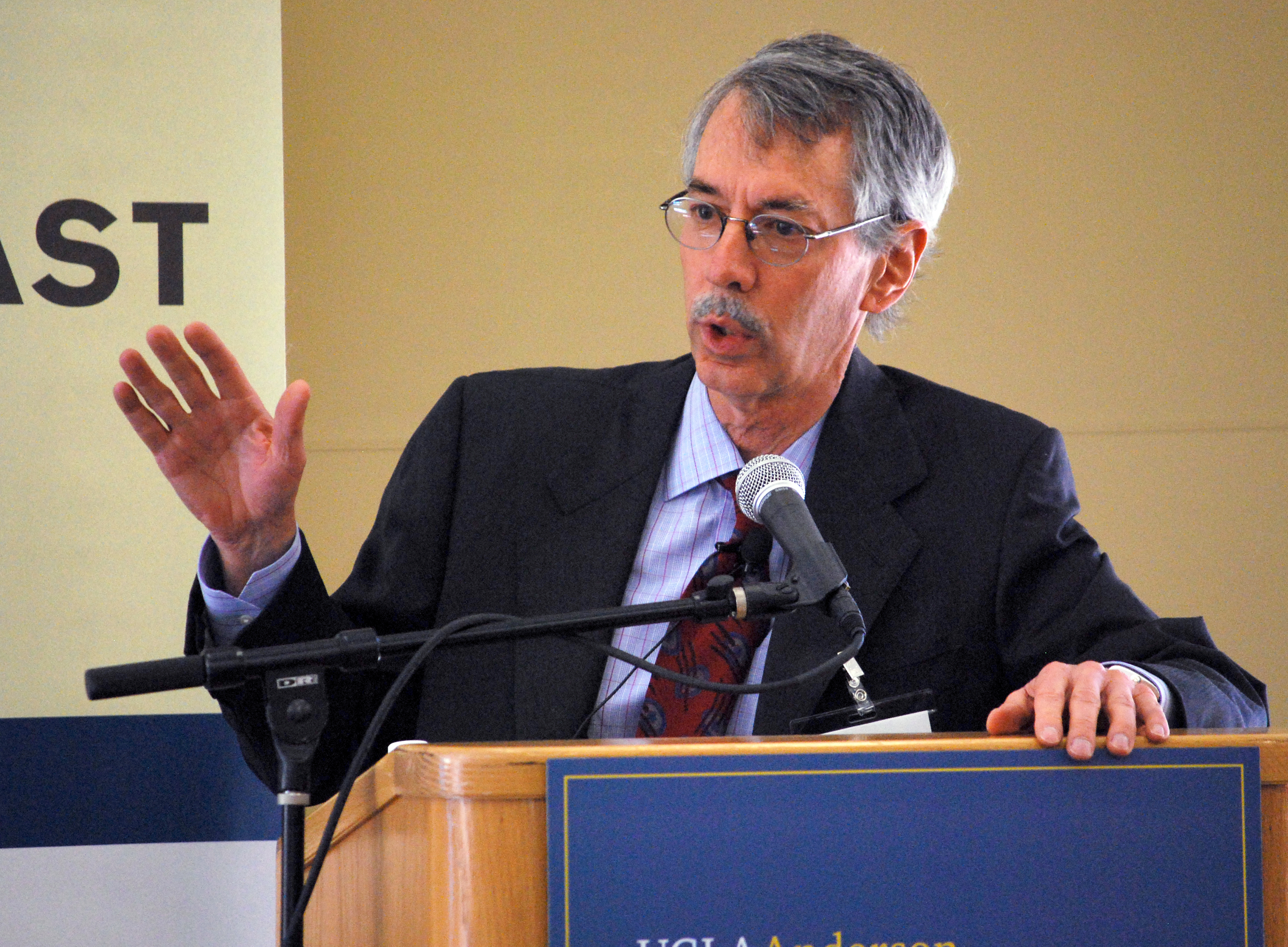Economic recovery will be slow, but California can expect an increase in jobs through 2012, said Jerry Nickelsburg, senior economist at UCLA Anderson Forecast.
The forecast, which was discussed at a conference Wednesday at the UCLA Anderson School of Management, compiled predictions for the national and California economies through 2012.
Experts predict that an increase in manufacturing jobs is needed to drive recovery, Nickelsburg said. The demand for manufacturing jobs will mostly come from an increase in exports and investment in equipment and software.
“Both of those are things that California is really good at,” Nickelsburg said. “So we expect California to grow faster as a result.”
It is precisely this fact that makes Nickelsburg more hopeful about the future. California’s economy is currently growing at a slower rate than that of the United States, and job growth has been minimal. However, things are expected to change in the next year.
“We think that 2011 will be the year that California grows at the same rate as the rest of the U.S.,” Nickelsburg said. “And then in 2012, California will begin to grow more rapidly than the rest of the U.S.”
Many of the exports contributing to the economic recovery are bound for the fast-growing markets of the Pacific Rim. Because of California’s proximity to East Asia, it has an advantage and, therefore, a chance of faster economic growth, Nickelsburg said.
Both the nation as a whole and the state have already seen increased exports to other countries, said David Shulman, senior economist at UCLA Anderson Forecast.
On Tuesday, China signed a $10 billion deal with the U.S.-based Boeing Co. for the acquisition of planes. This deal is a prime example of the recent exports, Shulman added.
“We have outsourced a lot of manufacturing to other countries, but the fact remains that the U.S. still sells a lot to the rest of the world,” he said.
Shulman also expressed the importance of increased capital investment in the next two years.
“If we reduce spending on taxes, that means we can invest more in machinery, which creates jobs in America,” he said. “We are in a recession, so we need these jobs.”
However, the availability of more manufacturing jobs and an increase in investments does not necessarily mean that California’s high unemployment rate will decrease rapidly.
“We are adding jobs, but more people are also coming into the workforce,” Nickelsburg said. “So we can have increased job growth, but there will still be people in the workforce who can’t find jobs.”
As a result, California will experience gradual growth while still suffering from a high unemployment rate.
Other factors, such as increased construction, may lead to greater economic prosperity, but as Nickelsburg predicts, they “will not be really driving this recovery.”
